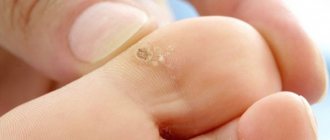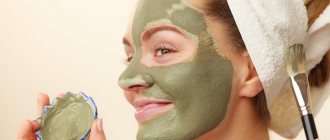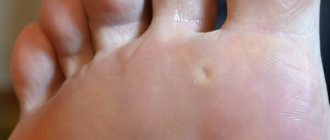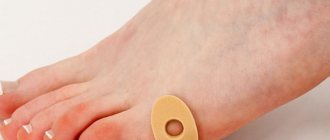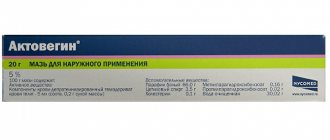A callus is a formation on the skin of the toes, which is a growth of keratinized epithelium. This type of callus has a rounded outline and is characterized by the formation of a core that grows into the deep layers of the skin. A deep callus causes pain and causes a lot of inconvenience: it interferes with wearing the desired shoes, is subject to friction and is simply in the way.
What is a callus
A callus is a conical thickening of the skin that occurs in areas of constant friction or pressure. Most often, calluses appear on the feet (heel, big toe, side of the foot) and on the hands. In men, a callus may appear on the penis due to frequent wearing of too tight underwear.
The main symptom of the appearance of callous formations is the formation of tubercles of rough skin. Depending on the location and appearance, there are several types of calluses:
- dry;
- wet;
- bone.
A dry callus is a small area of thickened, dead skin that is yellowish in color. A wet callus has a thinner surface and is often filled with lymphatic fluid. Callus occurs during the process of bone regeneration after fractures. Separately, bloody calluses, core calluses, and calluses are also distinguished.
Core (root) callus is a type of dry callus and is distinguished by the presence of a thickened keratin core. The external manifestation of a root callus is similar to that of a plantar wart, so a dermatologist can make an accurate diagnosis after performing a dermatoscopy.
Calluses (corns) are wide, flat thickenings of the skin that do not have a hard center. Corns on the feet and hands rarely cause pain when pressed.
A callus with blood is a type of wet callus filled not only with lymph, but also with blood. A callus occurs when blood vessels are too close to the surface of the skin that has been subjected to friction.
Podologist's advice
- Treat wet calluses in a timely manner, which over time can transform into dry calluses and then into core calluses.
- Wear shoes that fit comfortably. Avoid shoes with too thin soles. Don't wear stilettos all the time.
- Socks should be made from natural fabrics.
- Use antiperspirant for your feet if you suffer from excessive sweating.
- Maintain personal hygiene and do not wear other people's shoes.
- Watch your weight and use orthopedic insoles if necessary. It is not recommended to select them yourself; to do this, contact a specialist.
Causes of calluses
In response to constant friction and pressure, cells begin to synthesize increased amounts of keratin, the skin's protective protein. With calluses, keratin can form a plug in the deep layers of the skin. The main reasons for the formation of calluses on the feet and hands are:
- wearing shoes of the wrong size;
- foot deformities (hammer toes, bunions, bone spurs);
- chafing of the skin due to professional activities (musicians, weightlifters, artisans);
In tight shoes, the skin of the foot is strongly compressed, and in too loose shoes, it slips and rubs, which can cause internal (core) calluses to develop. Calluses on the foot due to toe deformities occur due to improper weight distribution. Due to frequent rubbing of the skin of the hands with professional instruments (strings, bars), calluses appear on the hands.
Effective baths
Foot softening baths are effective for any calluses, corns, hardening or abrasions of the skin. Corns on the sole with a core, the treatment (photo of the procedure) of which takes a longer period than ordinary calluses, it is advisable to steam them before further procedures. For baths you will need a basin that is the size of your feet.
Types of softening baths:
- Baking soda and laundry soap - dissolve 1 tbsp in 1 liter of hot water. l. grated dry soap and 3 tsp. soda, you can add 1 tsp. ammonia. You need to steam your feet for 35-45 minutes, then treat your feet with pumice and apply a medicinal composition or lubricate them with cream.
- Fermented milk bath – heat 1.5 liters of whey, curdled milk or sour milk to 40 degrees, immerse your feet in the hot liquid for 45-50 minutes, then wipe your feet and spread with cream or vegetable oil with glycerin (1/1 ratio).
- Cool water and salt - dissolve 1 tbsp in 1 liter of water. l. salt, you can use sea salt. Immerse your feet in the solution for 35-40 minutes, then treat the soles with pumice and lubricate them with a softening cream.
- Hydrogen peroxide and water – add 50 ml of 3% hydrogen peroxide to 1 liter of warm water. Soak your feet in the solution for 40-45 minutes, clean the exfoliated skin with a pumice stone or grater, and spread your feet with a rich cream.
- Potassium permanganate with salt - dissolve 1 tbsp in 1 liter of warm water. l. kitchen salt and several crystals of potassium permanganate until a bright pink liquid forms. Soak your feet for 20-30 minutes, then let your feet air dry for the solution to be absorbed by the skin.
- Onion decoction - after boiling the onion for compress, cool the water to an acceptable temperature, lower the feet and soak them in the decoction for 30-40 minutes, treat with pumice and apply a compress of boiled and chopped onion to the corns.
- Decoctions of chamomile, calendula, pine buds - you can make baths from individual decoctions of each plant, or combine decoctions in any combination. The effect of herbal decoction baths is enhanced by adding 4-5 drops of iodine or lemon juice to the solution.
Dry and wet calluses
Dry calluses are keratinized areas of skin that form in places where bone presses on the skin of the feet (tops of the toes). If you frequently wear tight shoes, dry subungual callus may form.
Wet (water) calluses are whitish-gray in color and have a softer texture because they form in areas of increased sweating on the feet and hands. Water calluses often form between the fingers and toes. If a wet callus on the foot is damaged, an infection can enter the wound, so it is important to treat the damaged area of skin with antiseptic agents.
Treatment with salicylic acid
Many pharmaceutical products for the treatment of corns include salicylic acid. The drug has an exfoliating effect on dead tissue, heals and disinfects small cracks in the skin. The products are convenient for independent use.
Salicylic acid in the form of an alcohol solution should be applied strictly to the location of the corn or callus, avoiding contact of the acid with healthy skin to avoid burns.
Apply the drug with a cotton swab only on the hardened surface for 3-4 rubles. per day until the dead cells are completely sloughed off. The course of treatment is 1-3 weeks. Before applying preparations with salicylic acid, it is recommended to make steaming baths for the feet.
Callus
Callus formation is an important step in the process of bone tissue repair after injury because it helps connect the parts of the damaged bone. After a fracture, the callus is enriched with calcium and gradually turns into normal bone tissue.
Due to insufficient immobilization or poor circulation at the fracture site, callus may form too slowly (delayed fracture consolidation). Its slow formation can cause the bone to heal incorrectly and cause pain.
Main symptoms
The presence of a dry callus with a core can be determined by the following signs:
- unpleasant and painful sensations are observed;
- often growths form near the thumb or little finger;
- An ingrown callus greatly interferes with a person’s ability to walk normally.
At the initial stage of the appearance of such corns, a person feels a slight tingling in the area of their formation. The injured area itches quite often.
Similar symptoms are also typical for ordinary calluses, but if they are core calluses, then when the stratum corneum is removed, you can see the root, which looks like a small dark spot and remains in place. This rod causes pain when moving. For this reason, removing dry calluses with a core is a rather complicated procedure.
How to get rid of calluses?
To get rid of calluses, it is enough to temporarily eliminate activities that cause chafing of the skin. You can remove dry calluses manually: you need to steam the skin of your hands and remove rough areas using pumice. In addition, the surgeon may recommend the use of keratolytic agents, which soften the skin. You cannot remove calluses on your own with the help of keratolytics if you have diabetes or pathologies of the immune system, since after removal a wound may form through which an infection can enter the body
You should see a doctor if the callus is painful to step on or touch, as this symptom may indicate the presence of a heel spur, a calcified growth on the surface of the bone. Removal of the callus core is performed by a doctor because removing the callus at home is ineffective and unsafe.
To quickly cure a water callus and avoid its damage, it is necessary to reduce the contact of the inflamed skin with the shoes: you can put a foam insert or a cotton ball between your toes. If the water callus bursts, the doctor prescribes the use of wound healing agents with an antiseptic effect.
Callus removal is performed surgically using local anesthesia. First, the surgeon cuts off the keratin growth on the skin, and then pulls out the rod. To speed up the healing process and prevent the wound from becoming infected, it is recommended to wear a sterile dressing for several days after the callus removal procedure. The surgeon also prescribes local use of antiseptics for two to three weeks after removal of the callus.
Avoid serious problems
A wide range of dermatoses develops in patients with diabetes mellitus. A number of pathologies are harbingers of this disease, others are a consequence. In total, up to 30 types of dermatoses with different clinical pictures are registered in diabetes mellitus.
All of the above diseases require professional and long-term treatment. It is recommended not to let your feet get into a condition that would require going to a hospital or clinic. It is necessary to regularly engage in the prevention of foot skin diseases. To do this you need:
- take care of your feet using products recommended by a cosmetologist;
- keep feet clean and dry;
- wipe the skin between the toes well after hygiene procedures;
- change socks twice a day, do not use synthetic shoes;
- wear only personal items.
People with chronic diseases are recommended to visit a podiatrist once every six months to receive professional care procedures.
Callus or wart?
A wart is a small growth that is caused by the human papillomavirus (HPV). Calluses and warts may be similar in appearance. A wart can be distinguished by its more granular structure and location (warts can appear on any part of the body). To accurately make a diagnosis (callus or wart) and select treatment, the surgeon can conduct a dermoscopic examination and additionally prescribe a test for human papillomavirus (HPV).
Treatment with propolis
Propolis is an effective means of quickly removing corns. To do this, you need to knead the required amount of propolis in your hands, form it into a cake and apply it to the steamed corns. Cover the compress with film on top, secure with a bandage and put on a sock.
After 12 hours, remove the cake, steam the foot and clean it with pumice. Then apply a compress of fresh propolis in the same sequence for the next 12 hours. To completely remove the corns, 5-8 days are enough.
Apple vinegar
Apple cider vinegar relieves inflammation in the area of calluses and corns; it is used in various combinations in the form of night compresses after steam baths:
- Mix equal amounts of sea salt and baking soda, dilute with apple cider vinegar until pureed. It is applied to the corns on a gauze napkin and covered with a film, and a sock is put on top. In the morning, remove the exfoliated skin with pumice and lubricate the sole with cream.
- 1 tbsp. l. apple cider vinegar mixed with 1 tbsp. l. vegetable oil and 1 egg. Beat the mixture, soak a napkin in it and apply to hardened areas of skin overnight. Put plastic bags and socks on your feet. In the morning, make a steaming bath with soda and remove the softened skin with a pumice stone. Lubricate the soles with nourishing cream.
- Cut the onion into 4 parts, soak in apple cider vinegar for a day, apply onion slices to the corns in the evening and secure with a bandage. In the morning, remove the bandage, remove loose skin and lubricate the feet with cream.
Vinegar compresses are used for 25-30 days.
Homemade mask recipes
Effective and fast-acting in the treatment of corns are masks that quickly soften and peel off hardened skin.
You can make them yourself:
- Mask of 2 tbsp. l. flaxseeds and 100 g of potato peel are boiled in 400 ml of water for 30 minutes, kneaded until smooth and applied warm to the sole for 25-30 minutes. After time, the mixture is washed off, the skin is cleansed with pumice and lubricated with cream.
- Boiled for 10-12 minutes. ivy leaves are applied to the problem area for 20-25 minutes, then the softened callus tissue is cleaned with pumice and lubricated with a nourishing cream.
- For a prune mask, 150 g of seedless fruits must be boiled in 150 ml of milk until softened, mashed the berries and applied to the corn under cellophane for 30 minutes. After the mask, remove the separated layer of skin and lubricate the foot with cream.
Masks are useful in cases where it is not possible to perform long procedures with compresses, and the corns are not yet in a bad state.
Soda
Baking soda softens accumulations of dead skin cells and corns.
In addition to steam baths with soda solution, soda can be used as a night compress in combination with:
- tomatoes;
- onions;
- boiled prunes.
The crushed products (each separately) are mixed with soda to a puree consistency and applied to the sole with a gauze bandage. The compress is covered with cling film and secured with a thick sock for 7-8 hours. The duration of the procedures is 1-1.5 months.


